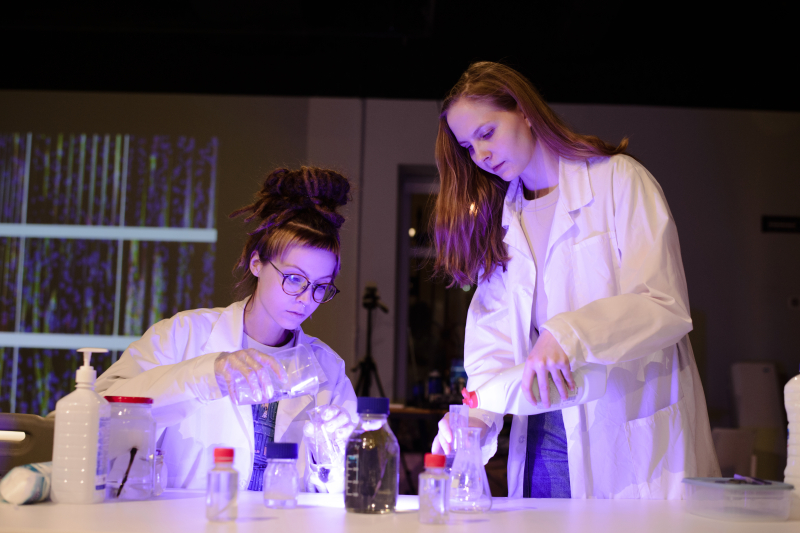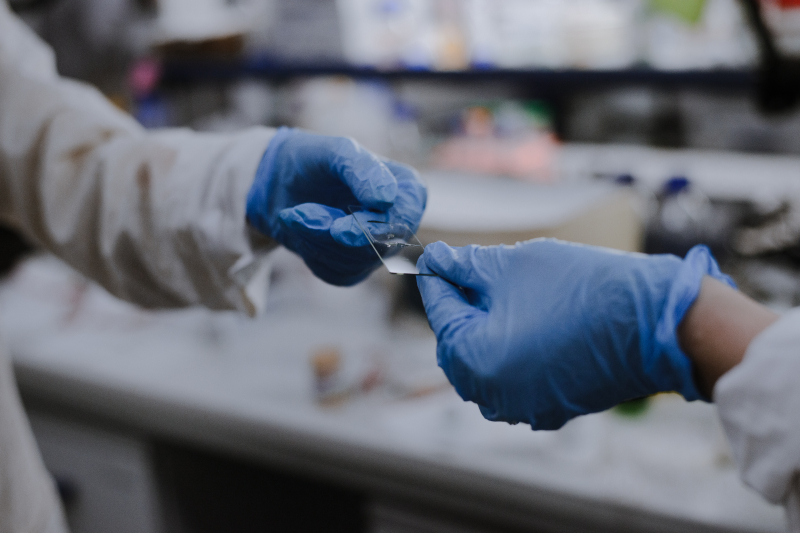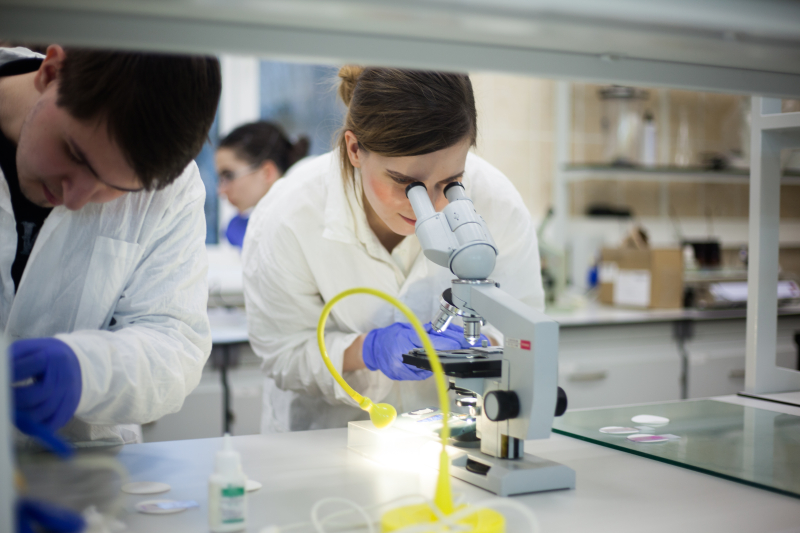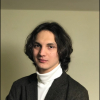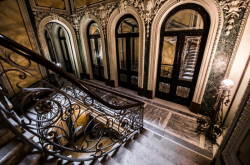Contents:
- Origins and inspirations
- Current projects
- How to join
- Lab equipment
- Educational programs and initiatives
Origins and inspirations
The inspiration for BioArt Lab came from SymbioticA – an artistic research laboratory that was established in 2000 at the University of Western Australia's School of Anatomy and Human Biology.
SymbioticA became the first institution of its kind: here, scientists and artists conduct experiments at the intersection of art and biology. It is also the first educational center in bioart to teach Bachelor’s, Master’s, and PhD students.
In 2018, BioArt Lab founder Ippolit Markelov returned from a residency at SymbioticA with the idea of launching something similar in Russia. Although the format was partially tested out at Skolkovo’s SkBioLab, headed by the artist himself, the idea wasn’t fully fleshed out until the end of 2022, this time at ITMO’s Art & Science Center.
“A full-fledged university laboratory in bioart is, so far, a unique phenomenon for Russia,” shares Ippolit Markelov. “But there are also other fascinating initiatives out there, such as the project New Anthropology (Pavlov Institute of Physiology, RAS), which also aims to bring artists and public institutions together.”

Natalia Grishina, Veronika Prizova, and Inas Imhasina at a workshop on plant decellularization. Photo by Alexander Pogrebnyak
Current projects
BioArt Lab specializes in the development of hybrid multiagent biological objects at the intersection of biology and tech.
In doing so, the project’s authors are determined to introduce a novel interdisciplinary approach that will combine biology, computer science, mathematical analysis, biophysics, engineering, philosophy, and art to explore the boundaries between humans and machines from various perspectives.
“Our research is offering a new perspective on such terms as “machine,” “robot,” and “program” – through the lenses of not only biology and computer science but also philosophy and art. Electronics are just a small fraction of computing systems, which include living things, too, and we need to explore all the variety they have to offer. Today, the work of bioengineers, programmers, robotics engineers, and cell biologists is blurring the line between biology and technology. Though held back by tech limitations, these attempts, generally rare and pionering, set the trend for the machines of the future: biologized, smart, and independent,” explains Ippolit Markelov.
One of the lab’s ongoing projects is called Plantoverse. It is a thorough study of how plants perceive and process information about the external environment, initiated in late 2020 by a team of then-students of the Art & Science program. Over the past two and a half years, the project was displayed at the art & science exhibition STAGE, the international biennale Art for the Future by the Multimedia Art Museum (Russia), and the new media culture festival Speculum Artium (Slovenia).
This year, Plantoverse was nominated for the Art, Science & Technology Award (ASTA) and presented at two major international conferences: the Gathering for Open Science Hardware (Panama) and Global Community Bio Summit 6.0 at MIT Media Lab (the USA).
“Plantoverse reconsiders the boundaries between humans and nature. We used a technological approach to represent biological features and systems in an artistic context. With the resulting data, we built a mathematical model that describes the optical properties of plant epidermis capable of seeing images. Our project is a biomorphic media sculpture that allows people to alter their perspective by seeing themselves with the “eyes” of plants,” says Maria Moschenskaya, one of the project’s authors.
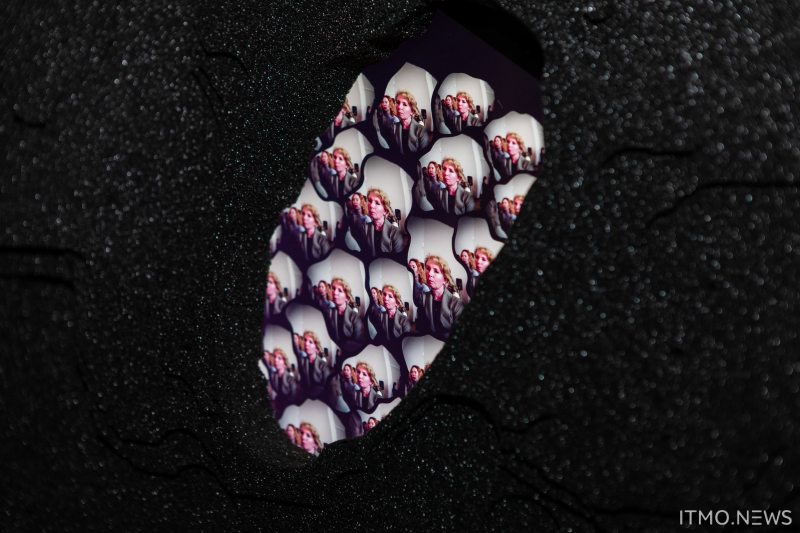
Plantoverse. Photo by Dmitry Grigoryev / ITMO.NEWS
The interim results of the study on the optical properties of the Embryophyta leaf epidermis were published in a collection of scientific papers of the Congress of Young Scientists included in the Russian Science Citation Index (RICC). The scholars, in partnership with their colleagues from ITMO’s International Research and Educational Center for Physics of Nanostructures, wrote and submitted another paper to a peer-reviewed journal in the Nature family.
Read also:
Art, Death & Robots: Meet the Winners of Russia’s First Award for Young Science Artists

Lab staff Maria Moschenskaya and Veronika Prizova with ASTA nominees at Skoltech. Photo by Evgeny Lyulyukin
How to join
Opportunities for contemporary artists. One of the lab’s primary functions is to help develop and popularize bioart and the field of science art as a whole. That is why the BioArt Lab will collaborate with the Art.ITMO.Residency gallery to welcome artists from all over Russia.
At the gallery, artists will acquire scientific and technical skills relevant to their field of study. Residents will be offered an opportunity to either work individually or in collaboration with consulting scientists and artists. This program is open to artists and researchers of all specializations, regardless of their career experience.
This format is still in its trial stages, with Sofia Osbanova, the winner of the ASTA award in the BioArt category, expected to become its first resident. As per the rules of the contest, she will gain full access to the lab’s equipment, along with a grant to fund her future project and the full support of the lab’s staff.
In order to apply for the residency, send a message to the Art & Science Center either by email (art@itmo.ru) or via its VK page.
Opportunities for ITMO students and staff. ITMO students can use the lab’s facilities to work on their personal projects as part of the Art Project as Thesis initiative or ITMO’s grant contests for Master’s and PhD students. The BioArt team is also interested in teaming up with the staff of other departments on either collaborative research or R&D projects for grant competitions.
Working at the lab. At present, the lab has a position open for a postdoc with a background in biophysics or plant physiology. Their work will be focused on studying plant photoreception, the morphogenesis of leaves, and biocomputing (the development of the fundamental principles of bioelectronic and hybrid biological computers, as well as their practical application).
Lab equipment
The selection of equipment available at the lab is constantly growing, with residents now able to perform experiments utilizing a number of electrophysiological and biophysical methods. The laboratory has access to production facilities required to manufacture art objects, as well as optical tools, a set of multi-channel amplifiers, and even simulators that can operate in a broad spectrum of biopotentials.
The lab’s team includes engineers and researchers with competencies in mechatronics and robotics, optics, software development, 3D printing, and rapid prototyping. In light of this, several DIY projects based on Open Science Hardware (hardware with designs that are free to use, modify, and share) are also being worked on.
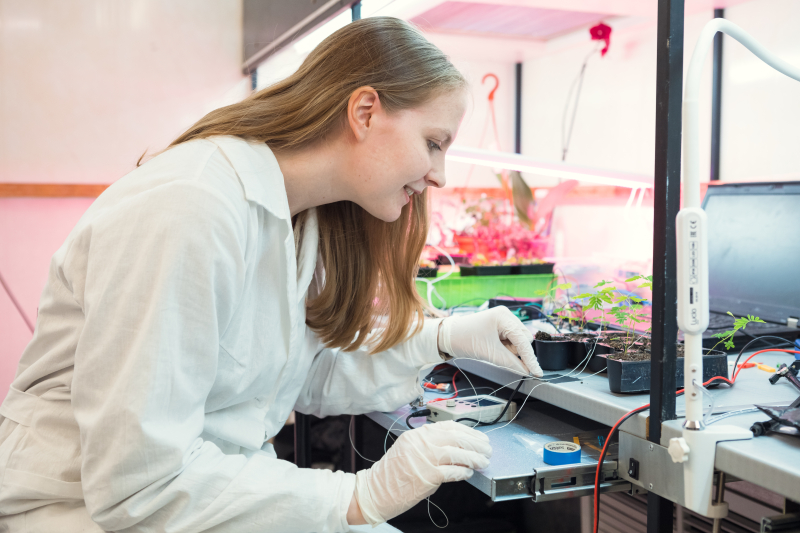
Veronika Prizova at BioArt Lab. Photo by Dmitry Grigoryev / ITMO.NEWS
Educational programs and initiatives
Last year, the laboratory won a grant from the Vladimir Potanin Foundation. Thanks to that, the lab’s team got to expand their course on bioart, which now consists of one basic and one advanced module. The course, which was previously only available to students of the Art & Science Master’s program, can now be attended by students of other programs.
Thanks to the support of Ekaterina Skorb, students of the Infochemistry Scientific Center joined the artists in attending several classes and working on multiple projects. A planned minor course on bioart for Bachelor’s students of biotechnology will be launched in the future. Additionally, the lab’s team is set to begin work on a joint research project with the students of the Faculty of Biotechnologies. Their study will concern the significance of plants in human spaces.
These educational initiatives are not bound to the grounds of the university – a recent bioart workshop took place at the GES-2 House of Culture. You can follow the Art & Science Center’s VK page and Telegram channel for updates on future events, workshops, and courses.
